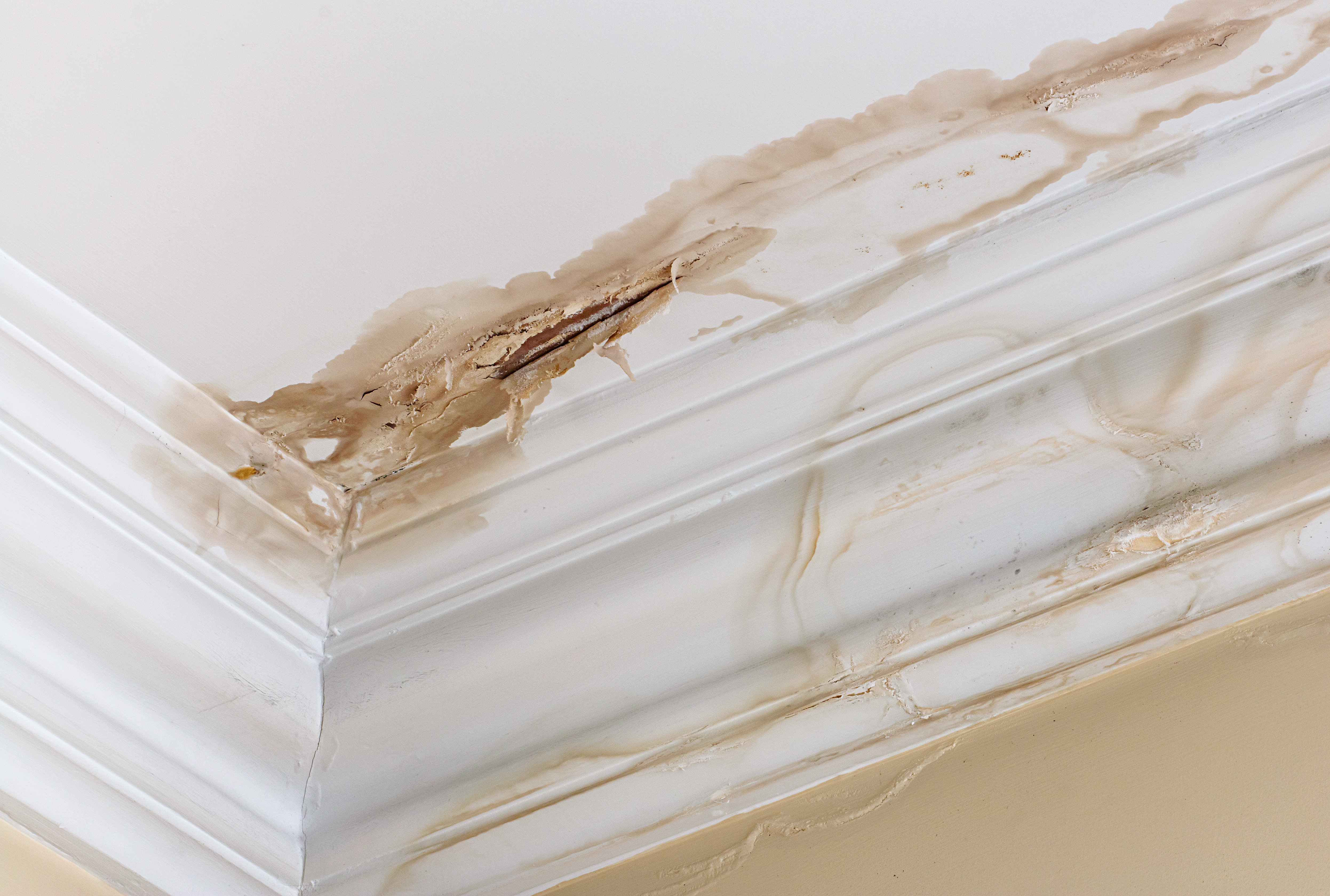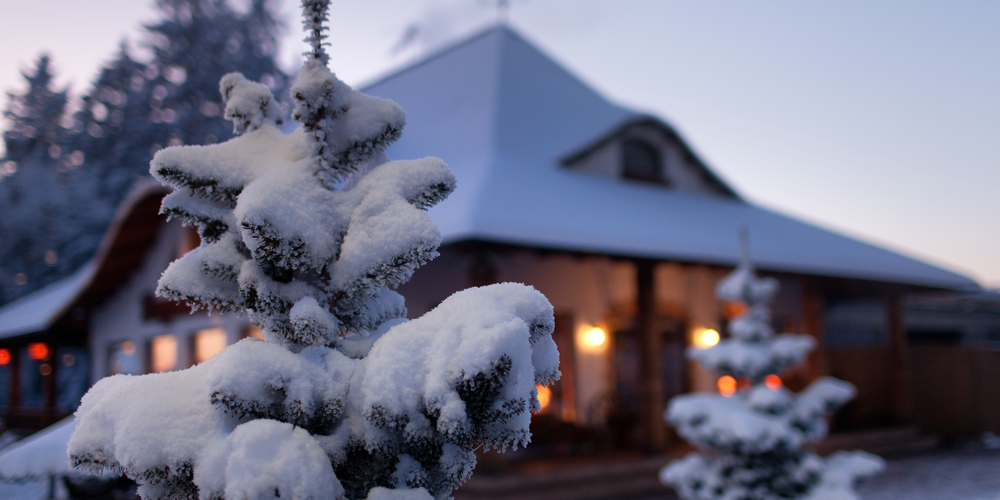
Winter Is Still Here!
Despite our recent warm spell, we can expect some severe cold spells this winter. The most immediate threat to your home is from frozen pipes, which could burst and cause substantial water damage to your home. The second threat is not immediate, but something you should prepare for now: snow loads and ice dams on your roof. Here are some steps you can take to protect your property from the effects of severe winter weather.
JUST A REMINDER!

It’s that time again. Starting January 20th, you can go to www.wickedlocal.com and vote for your favorites in the Franklin area. We hope you’ll vote for Keefe Insurance as your favorite insurance agency!
Prevent Frozen Pipes

Water damage from burst pipes is a major concern for New England homeowners. If there are pipes located against an outside wall, in an uninsulated area of the basement, crawl space or attic, this needs your immediate attention. If you have an outside faucet, this can also be a problem area. Here are few preventive steps you can take.
Turn Up The Thermostat
Keep your thermostat set at a minimum of 55 degrees, even during extended periods of absence.
Install More Insulation
Take a ride to the nearest hardware store and pick up a package or two of unfaced fiberglass insulation. While you’re there, get a set of heavy duty disposable coveralls, a dust mask, work gloves and a package of fresh utility knife blades. Don the protective work wear, load the fresh blades in the knife and assess your insulation needs in the attic, crawl space or other out-of-the-way place installing insulation over poorly-protected pipes. Neatness doesn’t count here, just get the insulation where it needs to go.
Use Foam Board To Insulate Large Areas
Got a really big area to protect? Keep the heat in with a rough-and-ready barrier built with foam board. Faced or unfaced foam board will work, especially if this is a temporary set up.
Install Heating Cables
Install a heat trace cable to keep a cold pipe from freezing. Follow the manufacturer’s instructions on the packaging for how to do this. Some heat tapes are wrapped around the pipe, others simply run along it. If you can’t find heat trace cable at your local hardware store, try an electrical supply house.
Use A Space Heater
You can keep unprotected pipes above freezing by simply placing an electric heater near them. Remember, the goal is not to make the space toasty warm and comfortable. It’s to keep the water in the pipe above freezing. The popular infra-red space heaters are the safest and use less electricity.
Turn Off The Water
In the worst case, turn off the main water valve while the house is unoccupied or while you sleep. If a pipe freezes and breaks, the spillage is limited only to the water already in the pipe.
Open Cabinet Doors
It’s not unusual for plumbing running to a kitchen sink on an exterior wall to be extremely vulnerable because the wall is not sufficiently insulated. Open the cabinet doors along that wall to project heat into the space. Place an electric heater in front of the cabinets for an extra measure of cold protection.
Turn Off Water To Outside Spigots
Disconnect all outdoor hoses and turn off all water to exterior sources, including spigots and sprinkler systems. Be sure to completely remove any water from hoses and sprinklers. This should be done before winter, but do it now if you haven’t already. You can protect the faucet itself from damage with a foam spigot cover available at local hardware stores.
IMPORTANT: Know where all your water shut-offs are located in case you need to use them!
Be Prepared for Snow

Even if you have tended to the issues with your attic insulation and ventilation, there is still a chance you will have to deal with ice dams. Be prepared to get out as soon as the snow stops and get to work clearing the snow before it gets a chance to start the freeze-melt-refreeze cycle. This is also important to alleviate the excess weight of the snow from the roof and the potential for roof collapse from snow load.
It is NOT a good idea to climb on your roof to remove the snow. Obviously, you could slip and fall off. Or worse, if you have hidden roof damage from ice dams past, you could fall through the roof. So, be prepared with the right equipment to remove the snow from the ground.
1) Buy a long-handled roof rake at your hardware store. Most rakes have sectional handles. A roof rake under $50 would typically have 3 sections. This way you can use what you need to remove the snow with a minimum of awkwardness. However, you have the option of buying additional sections to handle a second story, for instance. REMEMBER: Go gently with the rake. There is the danger of damaging shingles. However, replacing some shingles in the spring is less costly than having a ceiling collapse.
2) Keep your hose and spray nozzle handy. If an ice dam forms on the edge of the roof, don’t attempt to chop it up. You could really damage your roof or gutters. During the warmest part of the day, spray warm water on the dam, starting at the roof’s edge and moving upward toward the peak, to melt the ice.
3) Buy a supply of roof melt pellets. Usually it is not recommended to use rock salt or other sodium-based products designed for driveway or walkway on your roof. Again they may damage your shingles and will probably kill your grass and other plantings around the foundation. The newer roof melt pellets are formulated specifically for the job of melting ice dams. You simply toss them up onto the roof from the ground and they quickly start to work on the dam.
4) Talk to a professional. Line someone up in advance. Talk costs and availability. Make sure this person has appropriate equipment to clear your roof without causing damage. This could include a cherry picker and power washing equipment capable of spraying a large supply of hot water. If you have a multi-story house or a very complicated roof line configuration, don’t take chances. Hire a qualified professional if an ice dam forms!
If you do have a claim this winter due to burst pipes or ice damming, please call us immediately. We will be happy to assist you with information to file your claim and with finding qualified local professionals to restore your property.
Call or email us if you have any questions or concerns about your insurance program for the coming year. Call 508-528-3310 or 888-528-3310.
DID YOU KNOW?
What about heat cables for the roof?
Once, these were the only option. But they have serious drawbacks. They use a lot of costly energy. And they must be turned on and off regularly. If the power goes off, you are out of luck. Luckily, they have been replaced by more effective and energy-efficient technologies. Some of these involve panels or edging for the roof. Contact one of our fine local electrical contractors for more information and costs. Contact us for a referral.
Can these new products be retrofitted on an older house without replacing the whole roof?
Although many of these products are designed for new construction, there are some that may be retrofitted. Again, check with us for trained installers.
Do these new products come standard on new construction in MA?
Since they aren’t required by code, no. But it is worth asking the builder about installing them. They may make a good trade-off for some other feature you wouldn’t need or use very much… especially if you are looking at a multi-story home with an irregular roofline.
Can anything be done to the outside of the roof to stop ice dams?
Not to the roofing itself. Modification or replacement of your roof is the only sure way to permanently stop leakages. The trick is to find a roofer who will do the job right and not cut corners. We can provide you with referrals.
A quality roof installation should have four components: proper flashing, ice and water barrier installed on all roof edges and over all valleys, rolled asphalt underlayment over the entire roof, and quality roofing shingles with the proper overlap.
If I don’t have gutters, then I won’t have ice dams?
Not necessarily. Gutters don’t cause ice dams. Clogged gutters can contribute to ice dams because the melting water can’t clear the roof as easily. Make sure your gutters are free of leaves and other debris.
What is the recommended attic insulation for Massachusetts?
There are two types of insulation for attics: loose-fill insulation and batt insulation. When properly installed by a professional, loose-fill provides better coverage. Batt insulation comes faced or unfaced in R-38 and R-30 ratings for attic use. The higher the value, the better in insulating quality.
Is it worth trying to do the insulation myself?
The advantage of batt insulation is you can do it yourself fairly easily over a weekend. And you can recoup the cost over time in lower heating costs. Just be careful to put down enough wood to move around on so you don’t put your foot through the ceiling! Also be careful not to stuff insulation around the edges of the roof. This will obstruct air flow and render your soffits useless.
NOTE: It is critical that you work with properly licensed and insured contractors. We have many quality contractors of all types as clients and can provide references for you. Just call or email our office!

